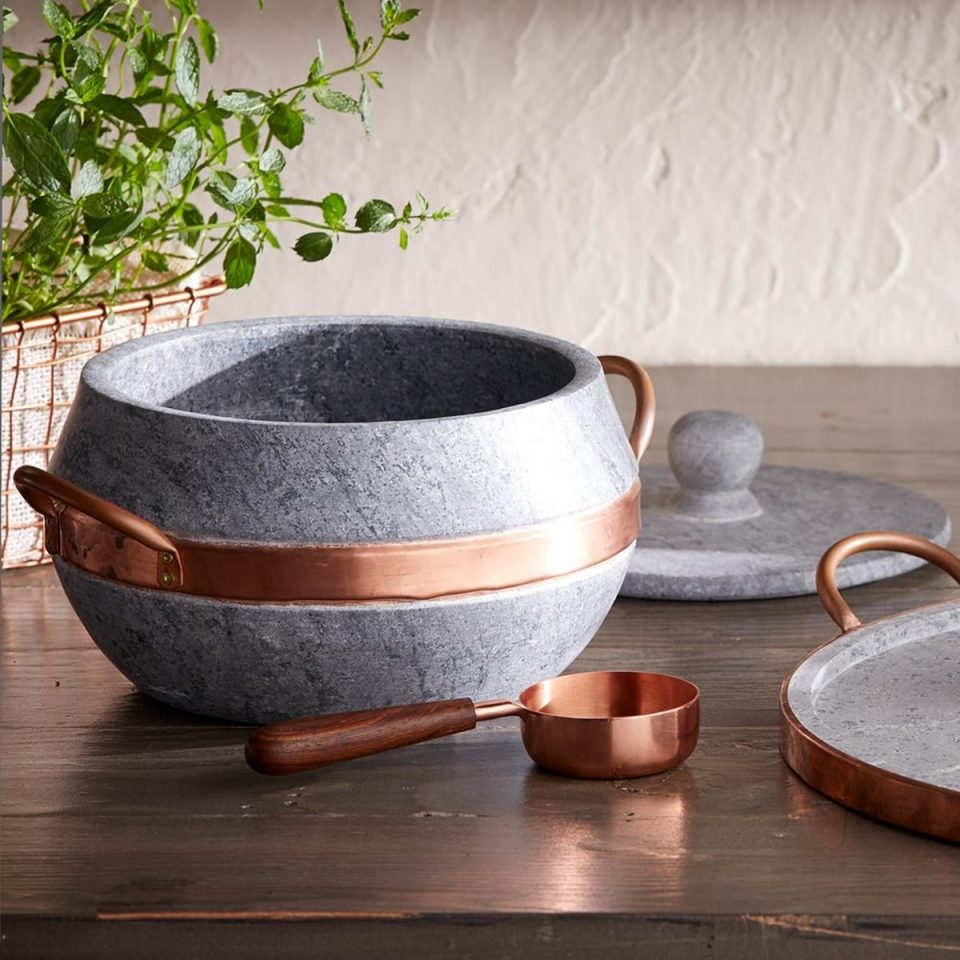Not a commonly heard of material for many novice cookers, soapstone has become an increasingly popular range of cookware over the past few years and continues to appear in many cookware stores.
The curing process to make pans of soapstone (padelle in pietra ollare) continually creates unique and intriguing pieces which reveal the natural beauty of the material with the varying patterns and colours which creep through. This different patterns and colours make the range an ideal addition to any kitchen looking to impress a colelction of guests as the pieces can not only be used for cooking, but for serving as well.
Why choose soapstone?
Aside from the remarkable aesthetics of the finished result, soapstone is known for having an incredible behaviour for retaining heat. Kepping a constant heat throughout a cooking session can be the focal point of creating a delicious meal, so this characteristic on its own already shouts why it is becoming such a popular kitchen essential.
The curing process of soapstone kitchenware
Soapstone, which is otherwise known as steatite, is an unusual material because despite the fact it is a dense form of rock, it is actually quite soft. It is easily scratched because of how soft it is.
To get the pots in soapstone (pentole in pietra ollare) ready for use in the kitchen there is a process to conduct which will provide an end result of a top performing cookware essential.
1. Rinse
Step one of the curing process endures a hot water rinse. Cold water will not have the benefits needed to start off the process, so hot water is used to rinse off the entire product. Since the product can easily be scratched, it is then wiped clean with a non abrasive cloth.
2. Grease it up
Once the pot or pan is thoroughly dry, the second step is to cover the product in oil. A choice of preference can be made here, but for great results olive oil comes highly recommended. A generous helping is required to cover the area.
3. Dry it off
The next step of the curing process takes a bit longer to complete. Once the product is covered in oil it needs to be left in a warm environment. The oil will be left to soak into the soapstone over a duration of 24 hours. At this point the pot or pan should feel almost dry.
4. Turn up the heat
This is where the pots and pans get separated. The final stage for curing soapstone pans is to place them in a cool oven and then set the temperature to 350 degrees. The heat is left on for 15 minutes, after which the product is left there to cool before use. For pots, they are filled with water and placed on the hob. When boiling point has been reached, they boil for 30 minutes before being left to cool. The cookware is now functional.

